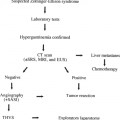
Surgical Options for Venous Insufficiency: Banding, Valvuloplasty, Ligation, and Venous Transposition
Surgical intervention for chronic venous insufficiency usually follows a prolonged period of conservative therapy, which commonly lasts many months to years. Patients may be subjected to multiple conservative treatments aimed at relief of leg discomfort, accompanied by degenerating skin changes and intermittent recurrent ulceration. The primary goal of these measures is to improve the dynamics of the venous return and to reduce the state of venous hypertension secondary to venous reflux. A variety of compressive devices are frequently used to assist the venous pump mechanism and to reduce the congestive aspect of the problem. These devices range from measured, graded pressure stockings to an assortment of leg wraps and devices. In addition, various exercises often are undertaken to increase the muscular-based venous pump mechanism and to reduce gravitational effects. Lifestyle alterations also are frequently used to provide weight control, when necessary, and to reduce prolonged sedentary periods, which may further increase venous stasis. Often these methods are successful in stabilizing the condition and allow the patient to assume an active, normal lifestyle. Failure of conservative treatment, however, results in a prolongation and often worsening of symptoms with continued development of leg pain, chronic edema, severe lower-extremity skin texture and color changes, and eventually ulceration with associated local infection and/or cellulitis. At this stage, lifestyle and general health concerns often reach a point where conservative measures are abandoned, and consideration of surgical intervention becomes a practical necessity.
Accurate determination of the pathology is essential to the planning and performance of the appropriate surgical procedure to correct the anatomic/physiologic defect. Vessel occlusion must be differentiated from venous stasis secondary to valvular incompetence and reflux. Careful analysis of the pelvic outflow system as well as the deep and superficial veins of the leg must be carried out to determine all levels of abnormal function. Of paramount importance is the differentiation between suprainguinal occlusion of the venous outflow tract or reflux secondary to iliac valvular failure. Of equal significance is the identification of occluded segments of the deep leg veins as well as the presence of dysfunctional or absent deep-system or perforator vein valves. Further, careful assessment of the greater and lesser saphenous systems must be carried out to determine whether failure at this level is also contributing to the patient’s problems.
 Diagnostic Evaluation
Diagnostic Evaluation
Diagnostic evaluation using noninvasive ultrasonography, functional ambulatory venous pressure measurements, and ascending and descending venography1–4 are essential in accurately assessing and identifying the anatomic/physiologic defects. Appropriate use of these tests allows in-depth understanding of the pathologic condition and offers significant information on levels of disease. The information provided is invaluable in the planning and performance of reconstructive venous surgery. Although expanding technology has allowed for the development of many different test procedures, the tests shown in Table 44–1 are provided by most vascular laboratories and provide excellent data in developing diagnoses and planning definitive surgical procedures.
Test | Function |
|---|---|
Continuous-wave Doppler | Identifies large-vein obstruction/insufficiency |
Color-flow duplex | Identifies obstruction and thrombus Measures flow velocity Identifies and quantitates valvular incompetence in large veins and perforators |
Air plesthpmography | Detects valvular incompetence (venous reflux) Quantitates degree of obstruction Distinguishes between superficial and deep reflux |
Ambulatory venous pressure | Direct measurement of venous obstruction (not level specific) |
Arm–foot (hyperemia) pressure differential | Quantitative measure of venous obstruction Distinguishes between valve incompetence and obstruction |
Ascending venography | Demonstrates anatomy and occluded venous segments |
Descending venography | Demonstrates valvular anatomy and reflux in iliac, femoral, and popliteal veins |
 Surgical Procedures
Surgical Procedures
Selection of the appropriate surgical procedure follows completion of a comprehensive evaluation. The decision to operate is based on the patient’s disease history, response to conservative treatment, and physical findings. In addition, invasive and noninvasive testing is required to establish the type and level of pathology. The most frequently performed operative procedures for chronic venous insufficiency are listed in Table 44–2.
Superficial Venous System
The presence of venous insufficiency and attendant venous hypertension caused by valvular incompetence in the greater or lesser saphenous system without significant deep-system involvement is an indication for interruption or excision of the involved segments. Demonstrated greater or (less frequently) lesser saphenous valvular incompetence at the saphenofemoral or saphenopopliteal junction without the presence of varicosities is an indication for ligation of these veins. This outpatient procedure can be performed easily with the patient under local anesthesia. The patient is placed in the appropriate position for the vein to be ligated. A small transverse incision is made 1 inch lateral and 1 inch below the pubic tubercle in the case of the great saphenous and one inch below the popliteal crease for the lesser saphenous vein. The junction of the target saphenous vein with the deep system is identified, and the saphenous vein is ligated just below the junction.
The presence of valvular incompetence with the presence of varicosities
Stay updated, free articles. Join our Telegram channel

Full access? Get Clinical Tree



